Looking for a Turks and Caicos Resort on Providenciales, then look no further than The Tuscany Resort on Grace Bay.
It is the newest build, and so is at the end of the line, which makes it calm and peaceful compared to other resorts. There are 30 luxury suites, in this extremely private luxurious boutique resort.
The Tuscany Resort has been described as completely unbelievable, and so well thought out that it never seems to be crowded.
The suites in this gorgeous Turks and Caicos Resort are all 3 bedroom, 3 bathroom, so they are perfect for families or groups of friends. It’s especially good for a group of friends because each bedroom has its own bathroom They are all beautifully decorated and equipped including a huge kitchen, a laundry room, and a very large well screened patio which opens off the large dining and living area, and is designed to give a floor to ceiling panoramic view of Grace Bay and the incredible turquoise sea that lies beyond it. Having said that it is important to avoid the first floor doesn’t have a view. Best of all try to get a suite on the fourth floor, and another tip is to avoid the middle suite because they are darker, and also you need to request a room on the outside of the building.
The décor of the suites are quite incredible with a tropical theme. The sun loungers, more chaise longues really give you the perfect end to the perfect day, with a glass of wine gazing at the Reef as the sun sets in an amazing display of different colours.
You won’t need the air conditioning, because of the cool breezes coming in through the doors.
Although the Tuscany resort has no restaurant you will find plenty within a short walking distance and in your suite you have everything you will need for a truly remarkable Turks and Caicos Resort Vacation.
One of the best things for many people is the fact that you can get massages in your room from Spa Tropique, just a phone call away. It could be a great way to spend the day, by going down to the beach for a swim, up to your suite for a massage, and then back to the beach again!
As to be expected in a high quality Turks and Caicos resort the pool is great, and the temperature is about right. Because the beach at Grace Bay is so nice you could well have the pool almost to yourself much of the time. It would however be a shame not to go to the beach, and you needn’t worry about be hassled by hawkers and vendors because it is illegal on the Turks and Caicos Islands. The beach and the water are so very clean it is amazing, so clear that you can see the fish in the water from the beach.
There are lots of restaurants to choose from close to the resort, varying from shacks to high quality high priced places, but excellent food to suit every palate and pocket.
The Tuscany Resort is a new kid in town, with a fast growing reputation, and if you want a quiet relaxing Turks and caicos Resort On Providenciales Island on Grace Bay then why look further than here?
For more information go to http://www.caribbean-vacationspots.com/categories/Turks-and-Caicos-Islands/
by: Gordon Steven


 Constructed in 1878, it was recently renovated and converted into a palace museum. It is a building of love, named after the wife of the second White Rajah. The fort commands a breathtaking and strategic position along the Sarawak River. Its location was deliberately chosen to overlook the long straight stretch of river approaching Kuching. Now a palace museum, it houses a rare collection of Royal Regalia and historical paraphernalia.
Constructed in 1878, it was recently renovated and converted into a palace museum. It is a building of love, named after the wife of the second White Rajah. The fort commands a breathtaking and strategic position along the Sarawak River. Its location was deliberately chosen to overlook the long straight stretch of river approaching Kuching. Now a palace museum, it houses a rare collection of Royal Regalia and historical paraphernalia.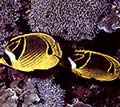 The South Luconia Shoals is one of the finest locations to dive. It is as good as the most pristine areas of the Great Barrier Reef. It is suitable for both the novice diver and the veteran with large areas of shallow flat reef, as well as drop-offs that have healthy corals to well below 120 feet. It also lies in the center of biodiversity for coral reefs, and as such contains hundreds of different tropical fishes and corals.
The South Luconia Shoals is one of the finest locations to dive. It is as good as the most pristine areas of the Great Barrier Reef. It is suitable for both the novice diver and the veteran with large areas of shallow flat reef, as well as drop-offs that have healthy corals to well below 120 feet. It also lies in the center of biodiversity for coral reefs, and as such contains hundreds of different tropical fishes and corals.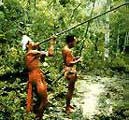


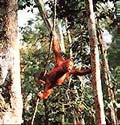 Unlike in a zoo, the Orang Utan (wild man of Borneo) at Semenggoh Rehabilitation Centre are set free in a 740 hectare forest reserve. Here, the Orang Utans and other native animals are nurtured to readapt themselves to the jungle life and to once again live in the wild. A half-hour leisurely stroll on the specially built plank-walks from the entrance of the Rehabilitation Centre gives you a golden opportunity to observe these orang utans, as well as view various species of trees and tropical fruit trees from the rainforest. It is sheer delight to watch these charming and entertaining Orang Utans during feeding time as well as their childlike antics.
Unlike in a zoo, the Orang Utan (wild man of Borneo) at Semenggoh Rehabilitation Centre are set free in a 740 hectare forest reserve. Here, the Orang Utans and other native animals are nurtured to readapt themselves to the jungle life and to once again live in the wild. A half-hour leisurely stroll on the specially built plank-walks from the entrance of the Rehabilitation Centre gives you a golden opportunity to observe these orang utans, as well as view various species of trees and tropical fruit trees from the rainforest. It is sheer delight to watch these charming and entertaining Orang Utans during feeding time as well as their childlike antics. On a 17 acre site at the foothill of Mount Santubong, fronting the South China Sea is the Sarawak Cultural Village, which exudes the typical warmth and hospitality of the state. Here, you have the opportunity to share the arts and crafts, games, food, and music of the seven major cultures of Sarawak. At a modern theater, the visitor can see performances of multicultural dances and lots of bamboo (bamboo musical instruments, bamboo carvings and even a bamboo bridge). You are taken into the world of "longhouses", drums, and gongs. You are taught to use the blowpipe (the weapon of the jungle nomads) and you get the opportunity to see the women work on their intricate beadwork.
On a 17 acre site at the foothill of Mount Santubong, fronting the South China Sea is the Sarawak Cultural Village, which exudes the typical warmth and hospitality of the state. Here, you have the opportunity to share the arts and crafts, games, food, and music of the seven major cultures of Sarawak. At a modern theater, the visitor can see performances of multicultural dances and lots of bamboo (bamboo musical instruments, bamboo carvings and even a bamboo bridge). You are taken into the world of "longhouses", drums, and gongs. You are taught to use the blowpipe (the weapon of the jungle nomads) and you get the opportunity to see the women work on their intricate beadwork.


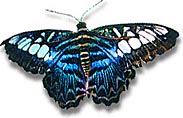 and ancient civilizations have flourished as well as disappeared in its vastness. Legends abound, and archaeologists have only just begun their efforts here. Equally exciting discoveries are now being made by genetic biologists, who have begun searching the wealth of life in Malaysia's forests for new medicines with which to combat AIDS, cancer, and many other illnesses.
and ancient civilizations have flourished as well as disappeared in its vastness. Legends abound, and archaeologists have only just begun their efforts here. Equally exciting discoveries are now being made by genetic biologists, who have begun searching the wealth of life in Malaysia's forests for new medicines with which to combat AIDS, cancer, and many other illnesses. 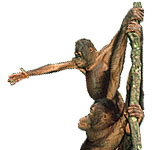 In order to safeguard its precious natural heritage, Malaysia has set aside many areas as parks and wildlife reserves. Together with natural forest management, conservation of wildlife, birds and marine life, nature reserves have been established through a network of protected areas. Almost one and a half million hectares of conservation areas are protected by legislation.
In order to safeguard its precious natural heritage, Malaysia has set aside many areas as parks and wildlife reserves. Together with natural forest management, conservation of wildlife, birds and marine life, nature reserves have been established through a network of protected areas. Almost one and a half million hectares of conservation areas are protected by legislation.